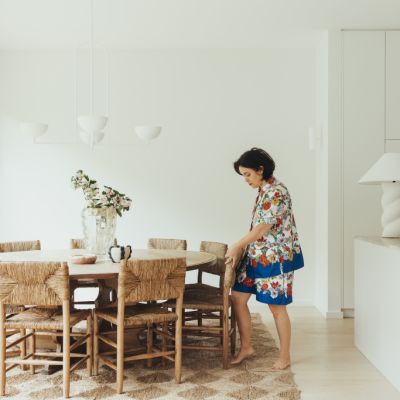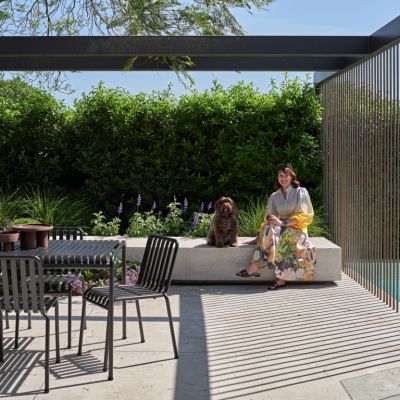How this Robin Boyd rental inspires Jorja Brown's vintage furniture business
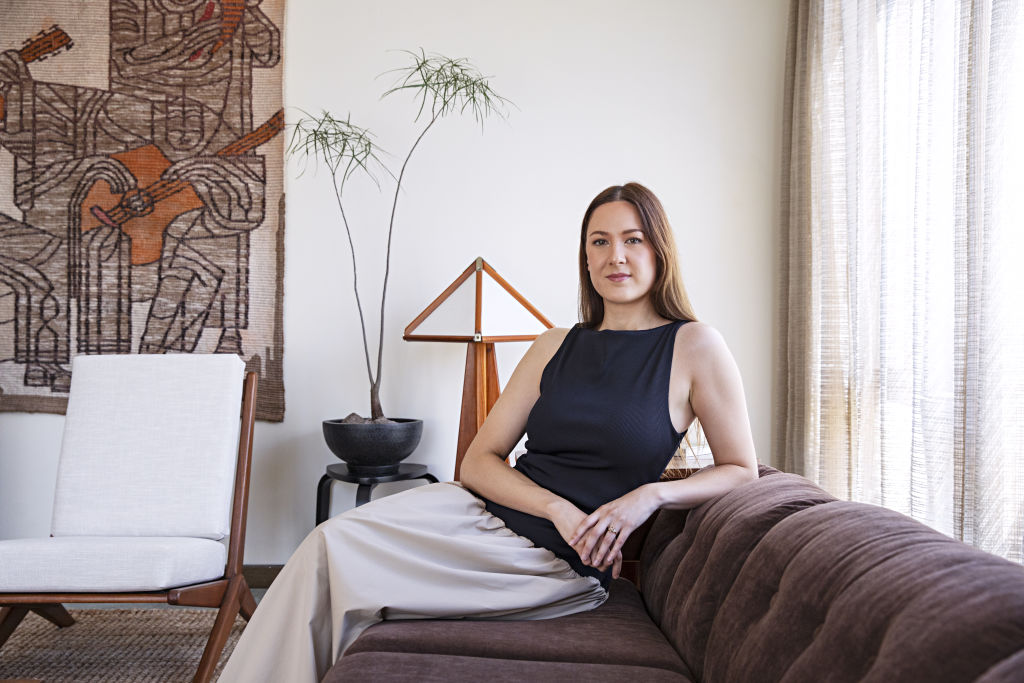
Name: Jorja Brown
Lives: In a Robin Boyd-designed flat in Kew, Melbourne
Since: 2020
Intentionality surrounds Jorja Brown, from the purposeful way she sources for her vintage furniture business to her approach to decorating her home.
The sentiment extends to her career evolution as well. The former marketing lead combines her love for well-designed things with a desire to provide affordable, locally sourced pieces for people to cherish for years.
Based in Kew, Brown lives in one of two flats attached to Lawrence House designed by leading Australian modernist architect Robin Boyd. Her 1960s home doubles as a showroom and storage space – where treasures for sale serve as temporary home furnishings. “It’s kind of like a home gallery, but I just share it online,” she tells Broadsheet. “I get to live with them for a little bit and be part of their journey.”
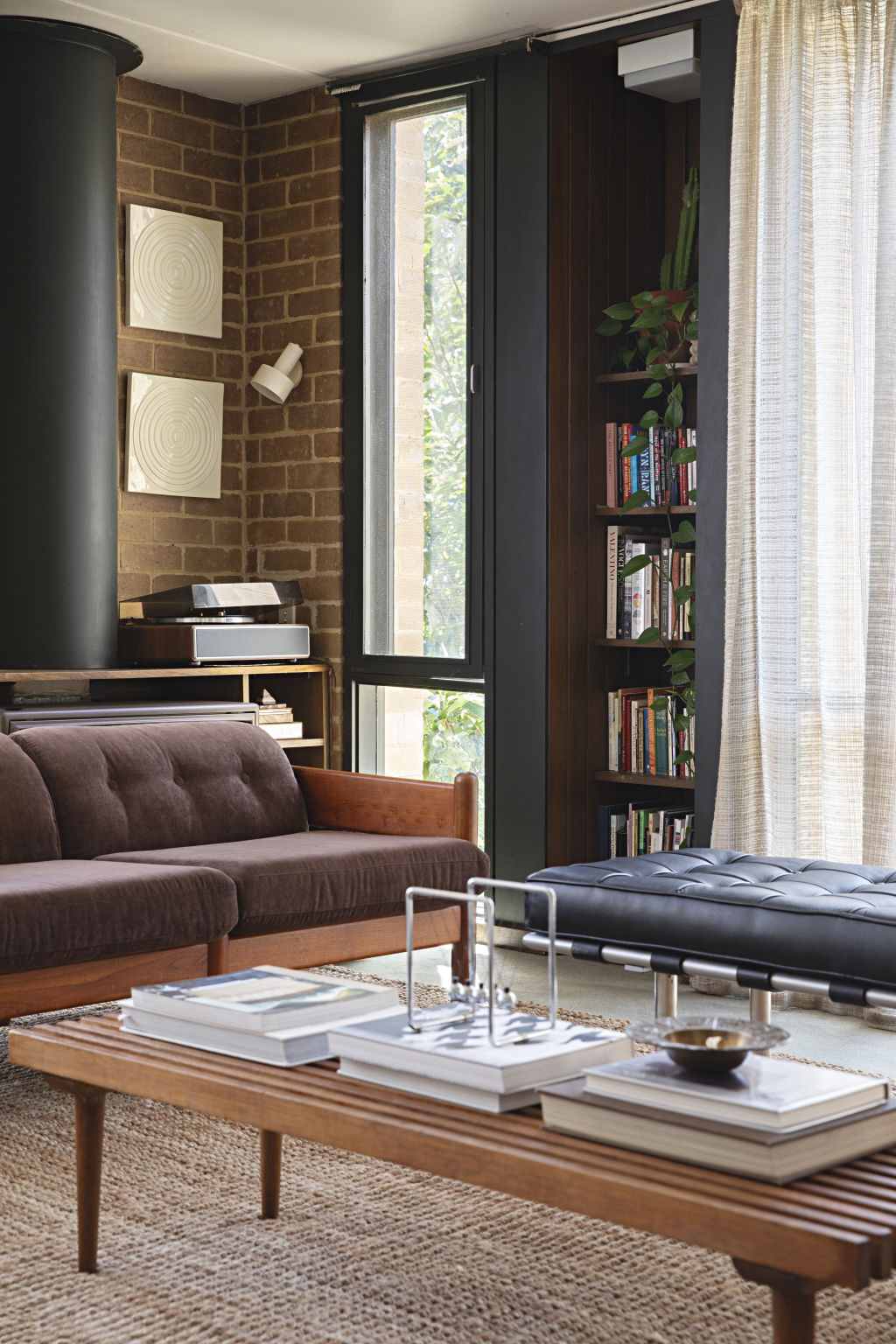
The week before March 2020’s lockdown, Brown “stumbled upon” her architectural rental and was the only person at the inspection. She knew instantly it was the one for her and ended up writing a kind of cover letter to become the house’s custodian. “I went into this big spiel saying how I love design and how it made me feel, and I was lucky enough to get it.”
Brown was the marketing lead for Melbourne Fashion Week and Melbourne Music Week for several years, and the move into her Kew flat was pivotal in inspiring her business. Previously called Slow Studio, she launched her now eponymous company in 2021.
“As I furnished my first home – I’d say 95 per cent is second-hand – I realised that my design eye, cultivated from my background in fashion and creative marketing, transitioned into the realm of interiors.”
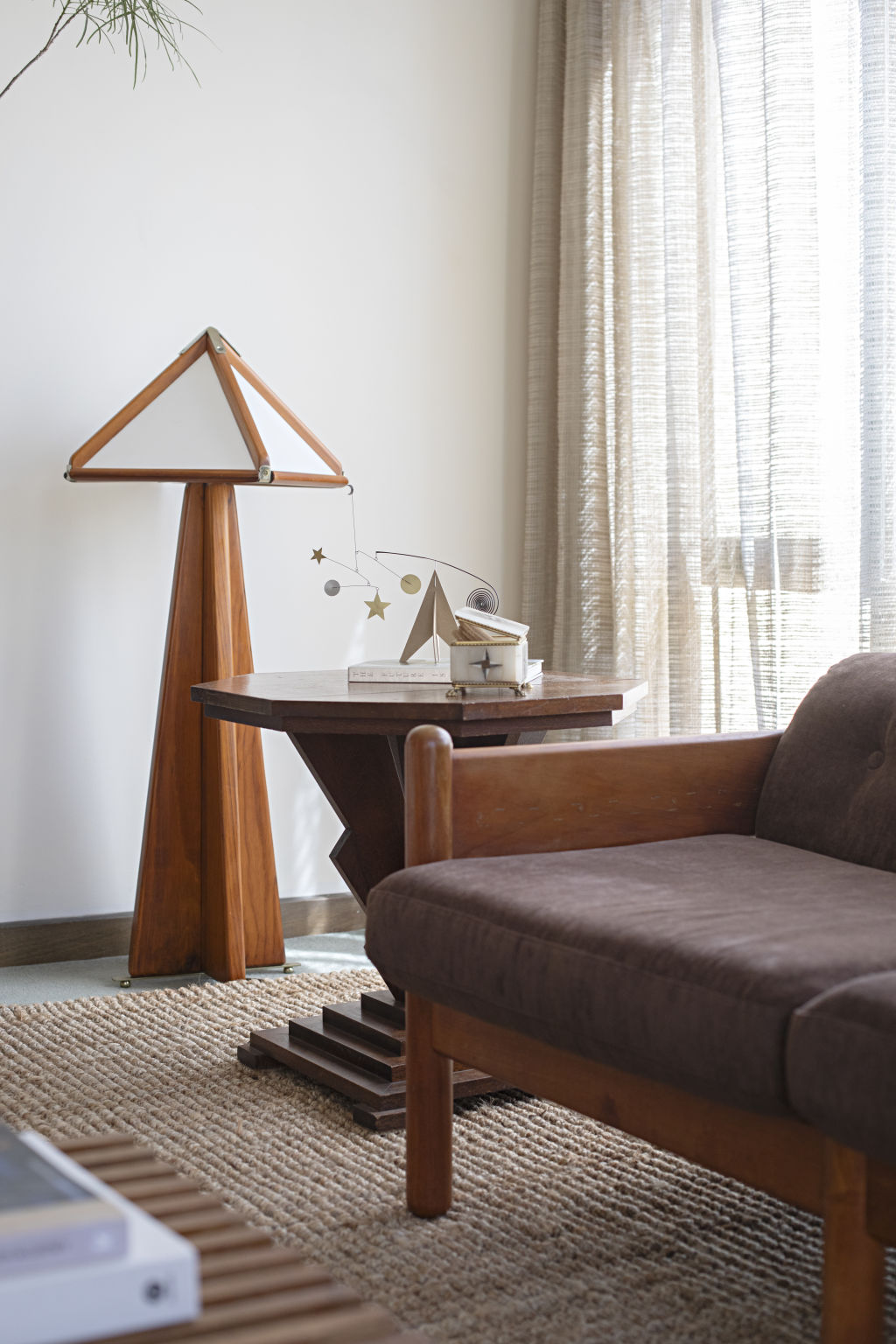
Brown started her Instagram account and initially ran it anonymously, selling pieces she found from scouring around Melbourne. “It’s a real creative passion and I love doing it,” she says. “I love the hunt. I’d rather be looking for stuff online or in real life than watching TV.”
She isn’t limited to an era when she’s looking for furniture, homewares and decor. Instead she chooses diverse pieces that stand out to her. Brown often restores them herself before listing them online. “I’m looking for materiality, form, craftsmanship, texture and uniqueness,” she explains.
Seeing pieces already in situ in her home helps customers picture what something might look like in their own place – whether that’s a pink, ’70s La Rochere mushroom table lamp or a circular bronze mirror.
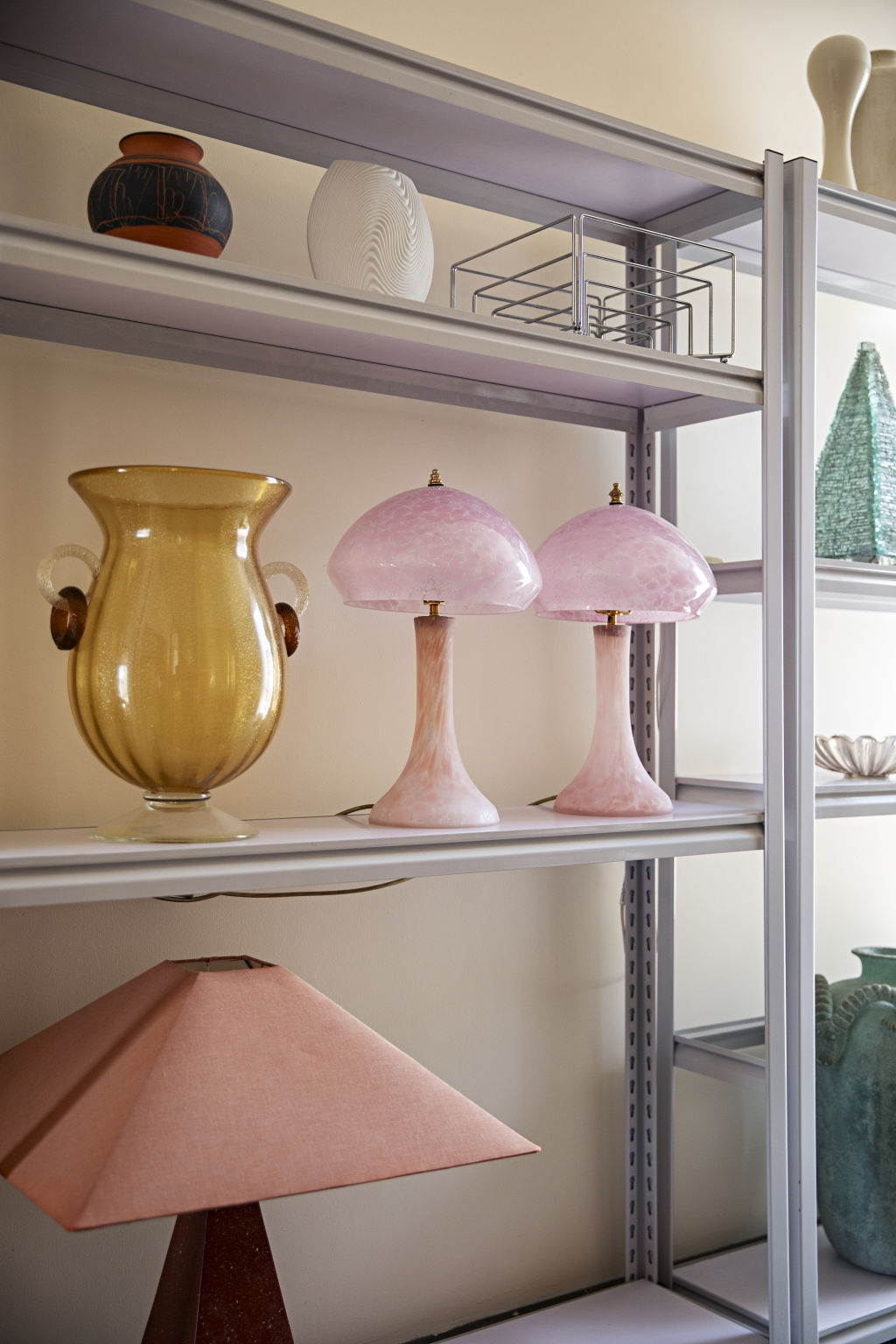
“The house is ever-changing. It never looks the same,” Brown says. Sometimes she wonders in hindsight if she should have kept something, but she loves seeing her pieces in interior design projects featured in publications or online. “It’s nice to see they’ve found different homes.”
Brown is currently working on two products of her own – a shelf and a lamp – which she hopes to release this year. “True to [my business’s former] name, it’s been very slow,” she jokes.
For now, it’s all about pieces that have lived and been loved before. “That’s what I love about sourcing vintage and second-hand. All those objects have a life and a story to tell.”
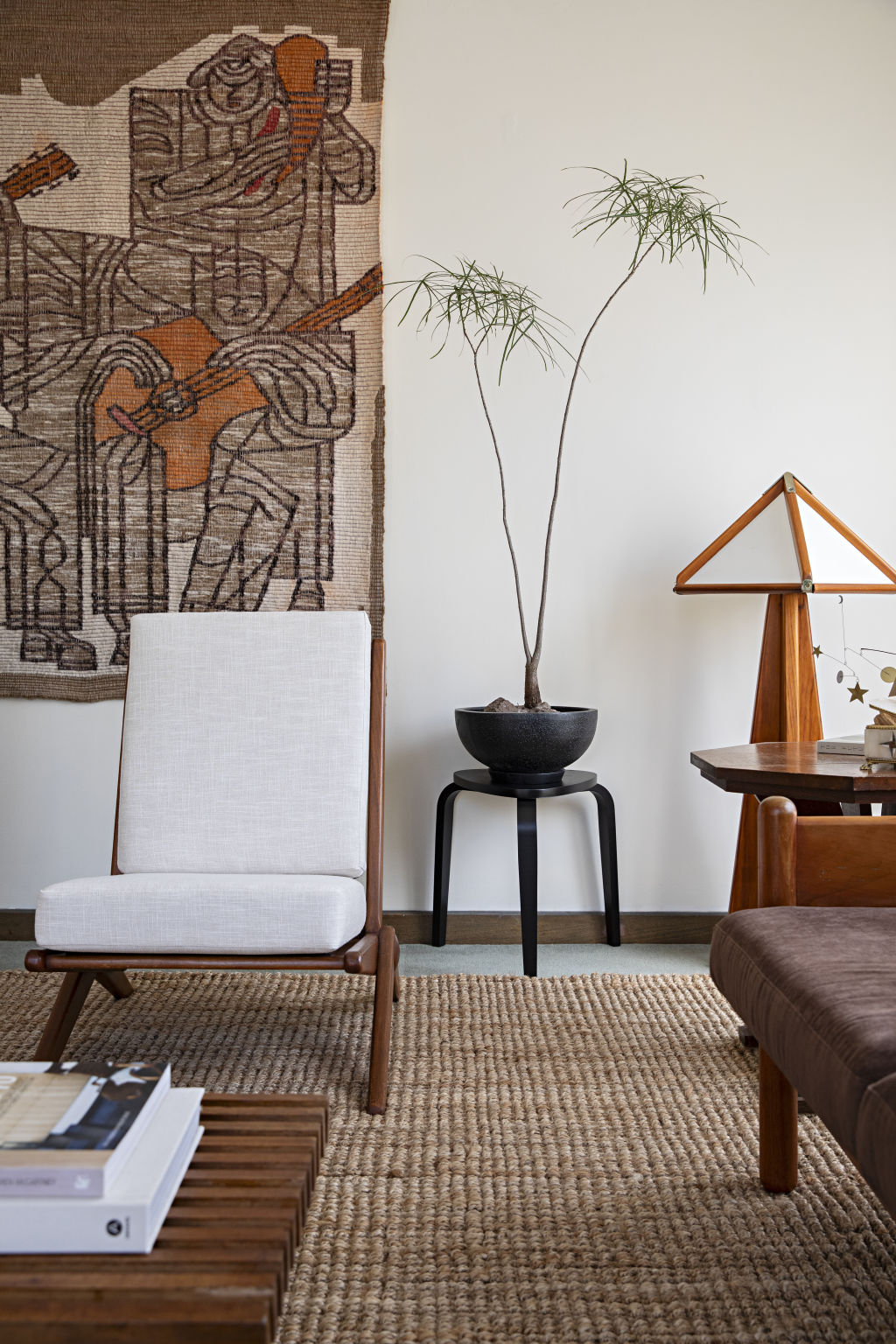
What made you fall in love with the house when you first saw it?
While the house itself is quite small, it feels expansive with great floor-to-ceiling windows. The external facade is quite striking, with brutalist columns and brickwork. On the inside, these columns serve a dual purpose; they house built-in walnut shelves.
I loved the wooden cabinetry throughout, and the lighting placements. The ceiling is just a concrete slab with no lighting [attached to it]. I’d never seen that – but the lights are concealed behind the wardrobes in the rooms.
When I first inspected the house before knowing its history, I thought, ‘Whoever designed this house, we’re on the same wavelength.’ Architectural tours run around this area and my house is on a tour – I often invite the groups in to have a look around and I hear people say it looks like a house that could be built now.
It seems modern almost. It’s aged well, and that’s great design. It’s a testament to Boyd and why he’s one of Australia’s most influential architects.
Have you made any (rent-friendly) changes since you moved in?
I removed some internal doors, opened up the space and connected the rooms. It gives it more of an expansive feel and is a good rent-friendly change that can be added back easily. But in houses like this – even if I wasn’t renting and did own it – my perception is that it’s about preserving and maintaining what’s been created rather than altering it too much.
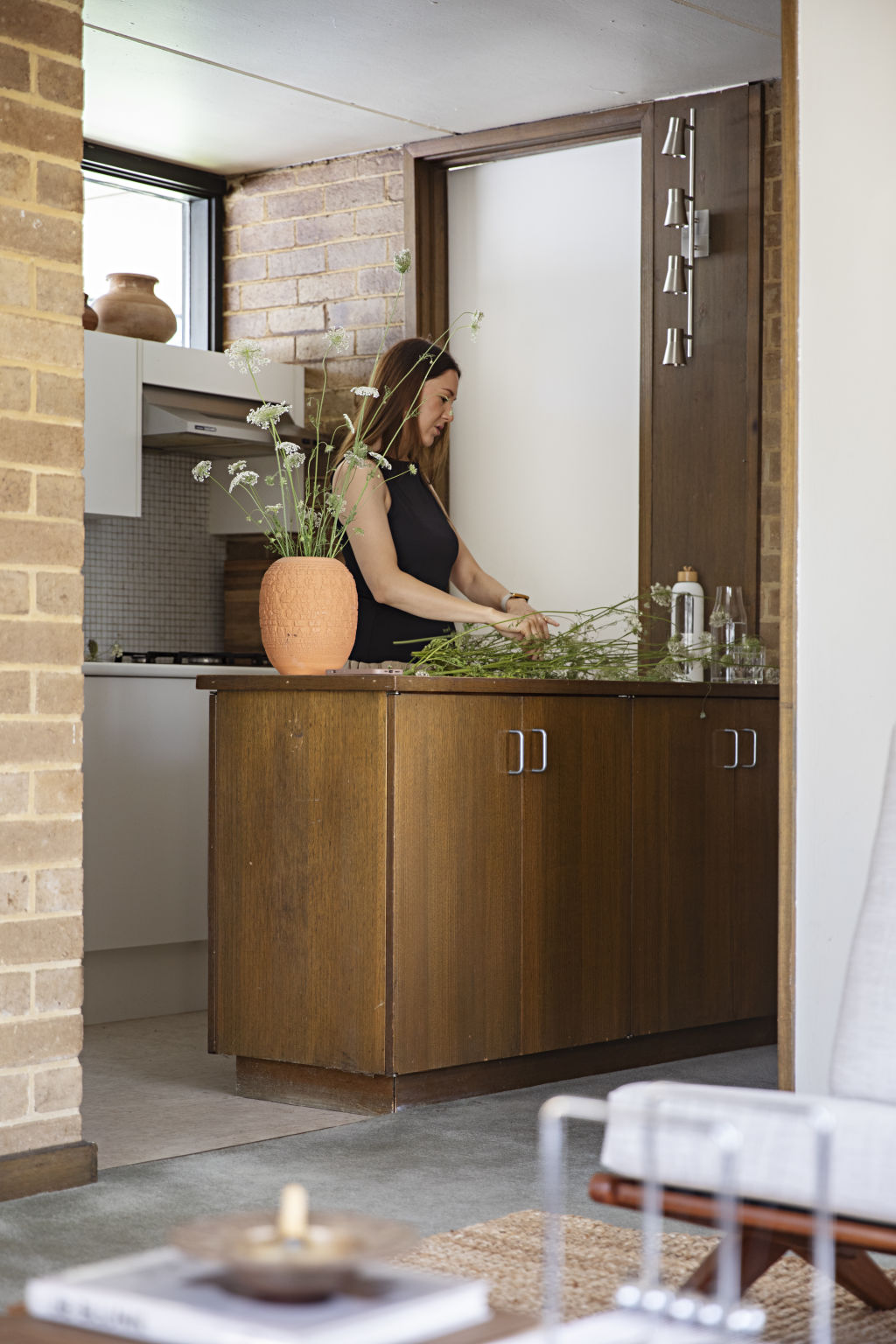
How would you describe the vibe of the house?
All the elements of the house together create a space that feels well-considered. Post-war, materials like concrete and bricks were inexpensive, and the simplicity of the design is functional yet beautiful. To me, the house feels serene and that’s how I decorate too. I like creating a peaceful and calm space for myself.
What’s your approach to decorating?
I moved into this house during lockdown in 2020, so it was a very slow curation. As it was the first house that I was moving into by myself – I’d shared houses with friends or lived with my partner – I only owned a mattress and a bookshelf.
I curated pieces one by one online, from garage sales and op shops. I’ve found unique pieces that added character to the space and in doing so I found my love for curating.
When I first moved in, the house was full of objects I’d collected, but over the past two years I’ve refined my style – and maybe [that’s] because I’m selling more too and things move often.
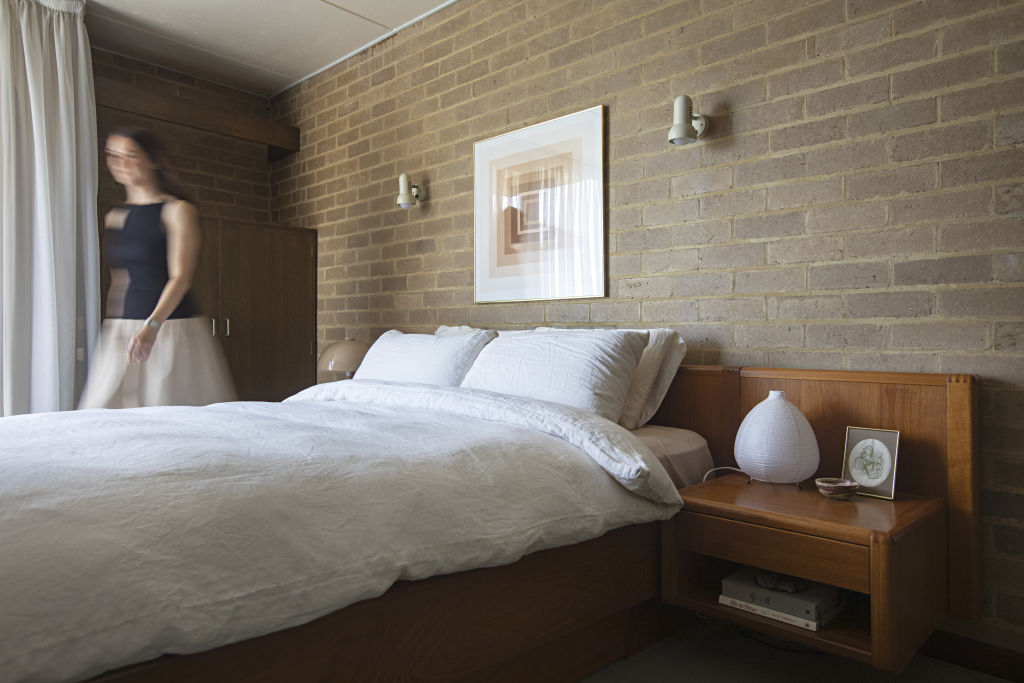
What’s the neighbourhood like?
I really enjoy it. I’m in a little area of Kew called Studley Park and there’s a high density of mid-century houses here. It’s in a bush setting and only 10 minutes from the city. The Yarra River is just one street down with winding walking tracks and, even though it’s close to the city, it’s quiet and feels connected to nature – which I love because [I used to live] on Chapel Street.
I went from a fast-paced fashion and event lifestyle in South Yarra, to moving here and creating my own space. I’ve matured and I now relish a slower life.
What’s your favourite room in the house?
The bedroom, because of the corner floor-to-ceiling window. The morning light and the fresh air are beautiful. The river’s home to many native bats, and at dusk I get this view of all of them flying over as they awaken. It feels like a cocoon in here, I love it.
Do you have a favourite item in the house?
Currently, it’s my 1970s teak queen bed. It’s a floating ’70s design where the bedside tables float with it. I had seen similar many years ago and set out to find one.
I looked every week for about two years and ended up finding it for under $100 – which is a crazy price because they sell for upwards of $4000. I’ve learned that it takes a lot of patience and consistency to find great items.
This article first appeared in Domain Review, in partnership with Broadsheet.
We recommend
We thought you might like
States
Capital Cities
Capital Cities - Rentals
Popular Areas
Allhomes
More
